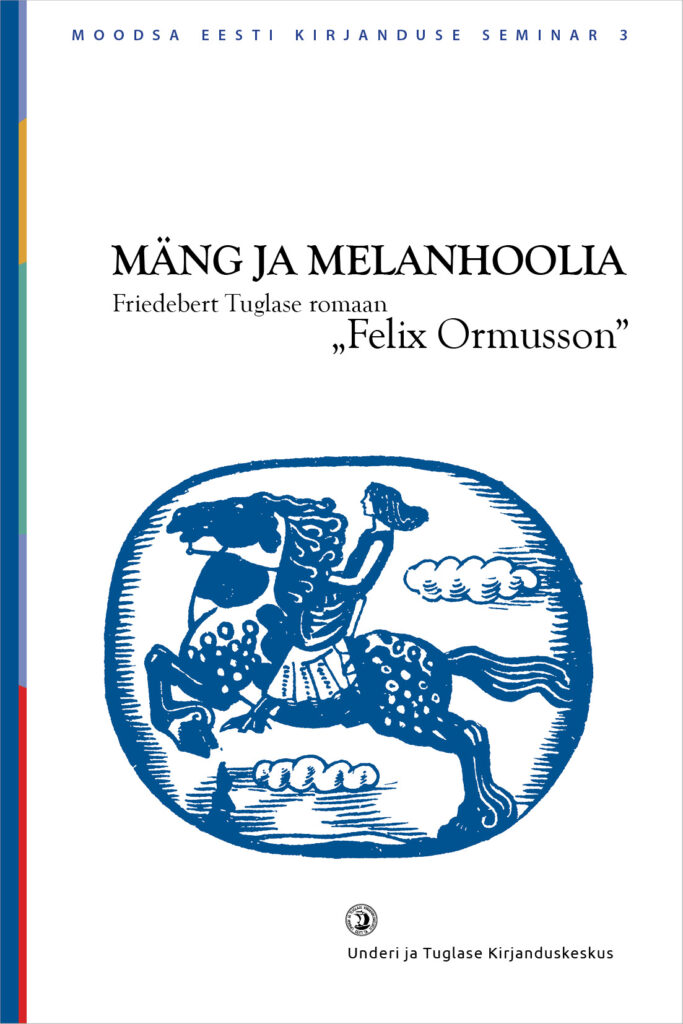Article collection Game and Melancholia. Friedebert Tuglasʼ novel “Felix Ormusson”
The collection of articles was published as part of the Under and Tuglas Literature Centre series Seminars on Modern Estonian Literature which offers a fresh look at key literary texts from the 20th century Estonian literature.

- Title
- Mäng ja melanhoolia. Friedebert Tuglase romaan „Felix Ormusson“
- Editors
- Mirjam Hinrikus, Jaan Undusk
- Peer-reviewer
- Tiina Ann Kirss
- Language editor
- Katrin Puik
- Index compiler
- Merlin Kirikal
- Designer
- Tiiu Pirsko
- Series’ designer
- Jaan Klõšeiko
- Publisher
- Under and Tuglas Literature Centre
- Published
- 2022
- Pages
- 344
- Language
- Estonian
The novel Felix Ormusson (1915) was one of the creative apexes of the writer Friedebert Tuglas (1886–1971), but also the culmination and a certain endpoint of the aesthetic strivings of the members of the grouping Young Estonia (1905–1915). The novel contains multiple allusions to European cultural milieu at the beginning of the 20th century and correlates with various internationally renowned cultural texts. In Estonia, Felix Ormusson gave the initial impetus to the polemics that was to boil for decades, namely the debates between the proponents of the so-called closeness to life and the adherents of “closeness to spirit”. There was no other character in Estonian literature of that time who would have caused as many controversial opinions as the eponymous character of the novel.
The collection of articles Game and Melancholy. Friedebert Tuglas’ novel “Felix Ormusson” is compiled and edited by Mirjam Hinrikus and Jaan Undusk (Under and Tuglas Literature Centre, 2022) and it is based on a one-text-seminar organised and held by the literature centre. The keywords that frame the nine authors’ approaches to the novel are decadence, myth, irony, upstart, narcissism, pantheism, melancholy, Kierkegaard, Nietzsche, and others. The book is also visually eye catching: it contains several reproductions from the Estonian artists Nikolai Triik (1884–1940), Konrad Mägi (1878–1925) and Eduard Wiiralt (1898–1954), as well as photographs from many theatrical productions of Felix Ormusson.
The collection is useful for everyone who teaches, studies or researches Estonian literature, as well as for those who just want to delve into modern Estonian culture.
More information in Estonian HERE.